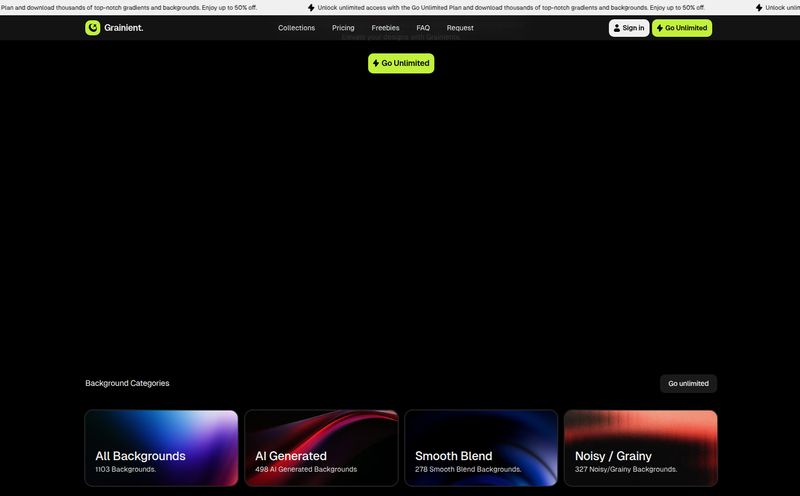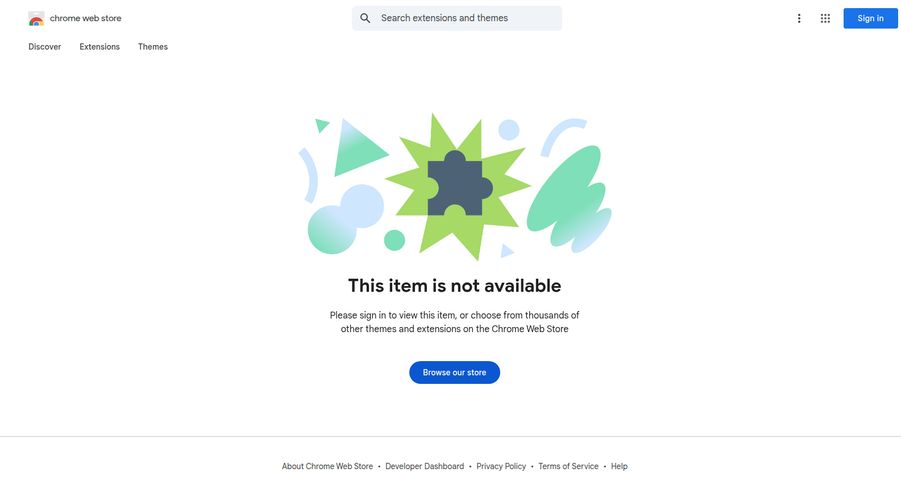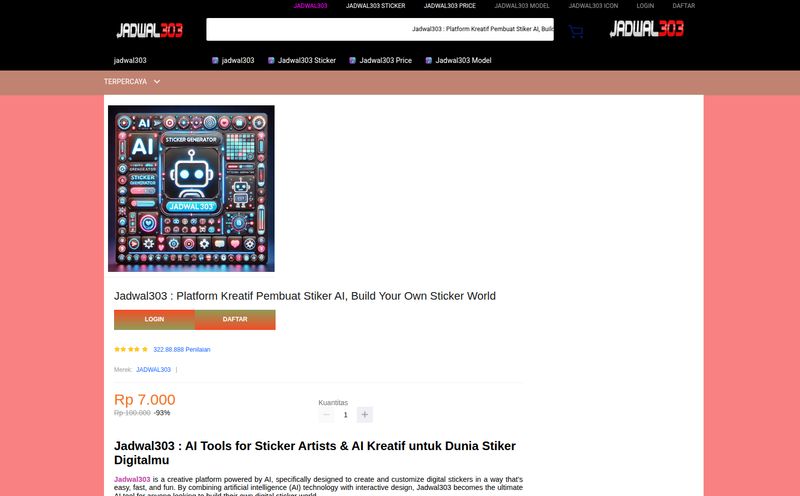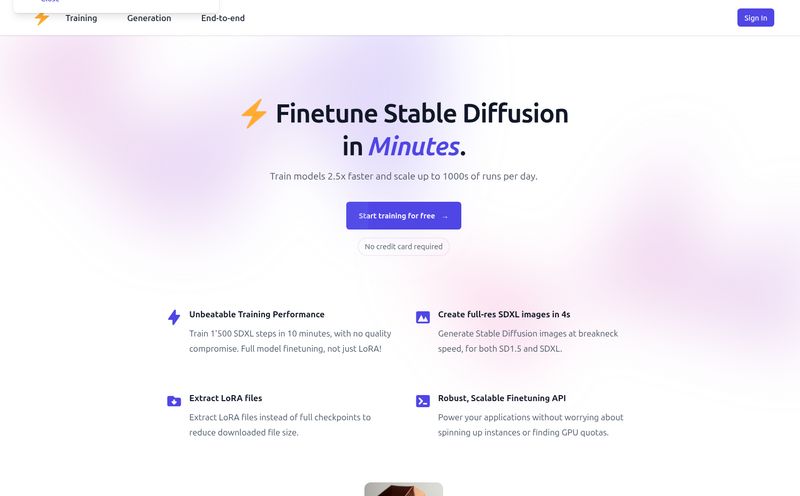As someone who's spent more years than I’d like to admit staring at analytics, optimizing landing pages, and trying to explain CPC fluctuations to clients, I’ve seen my share of “game-changing” tech. Most of it is just old wine in a new, shiny, venture-capital-funded bottle. But every so often, something comes along that makes you just... stop. And for me, this week, that something is called Industrial Render AI.
I remember back in the day, working with design teams. The process was agonizing. A brilliant idea would be born, sketched on a whiteboard or a crumpled napkin. Then came the endless, soul-crushing hours of 3D modeling and rendering. We’d wait for days, sometimes a week, just to see a single photorealistic image of a product concept. An image we might immediately scrap. The feedback loop was a glacier. So when I stumbled upon a tool promising to turn conceptual sketches into high-quality renders in seconds... well, the skeptic in me raised an eyebrow, but the tech nerd in me started brewing a fresh pot of coffee.
What on Earth is Industrial Render AI Anyway?
So what is this thing? In the simplest terms, it’s an AI platform built specifically for industrial and product designers. Think of it like Midjourney or DALL-E, but instead of generating surrealist paintings of cats in space, its entire brain is dedicated to understanding the lines, shadows, and forms of product sketches. The folks at XLLab AI Development are calling it a “GPT for industrial design,” and honestly, that’s not a bad analogy.
You feed it a simple sketch—could be a car, a coffee machine, a new pair of sneakers—and it spits out a photorealistic render. It’s designed to bridge that massive, time-sucking chasm between initial concept and client-ready visual. It's not about replacing designers; it's about giving them a ridiculously fast assistant. An assistant that doesn't need sleep and runs on pure data. The potential for rapid prototyping and getting ideas in front of stakeholders is just… massive.
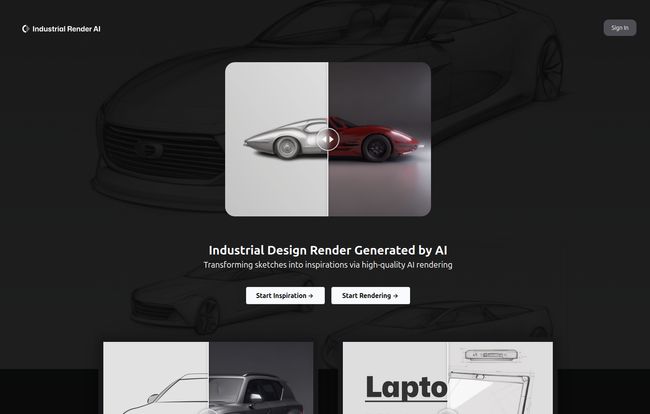
Visit Industrial Render AI
How It Actually Works: Peeking Behind the Magic Curtain
From what I've gathered playing around with it, the platform primarily operates on two very cool principles. It’s not just a one-trick pony; it offers a couple of pathways to get your creative juices flowing.
From Napkin Sketch to Photorealistic Model
This is the main event. You take a picture of your sketch. It doesn't have to be a masterpiece from a seasoned artist; the examples show everything from rough outlines to more detailed drawings. You upload it, and then you get to play with a few parameters. This is where you can guide the AI, telling it about materials, lighting, and general mood. You hit the ‘Start Rendering’ button, and in less time than it takes to explain what a bounce rate is, you have a set of professional-grade images. It’s wild.
Curing Designer's Block with an AI Muse
The second feature is for those days when the well of inspiration has run completely dry. We've all been there. Staring at a blank page, feeling like you'll never have a good idea again. Industrial Render AI lets you simply describe what you want to see. You type in a prompt like, “A minimalist aluminum laptop with a retro keyboard,” and the AI will generate not a render, but a sketch. It gives you a starting point, a visual foundation you can then refine, draw over, and eventually feed back into its own rendering engine. It’s a fascinating, circular process of creativity between human and machine.
The Good, The Bad, and The AI-Generated
No tool is perfect, right? Especially not in the AI space, which is still the wild west. After messing around and reading up on other users' experiences (shoutout to Cimate on Medium and Mad_Designer), I've got a pretty good feel for the highs and lows.
What I'm Genuinely Excited About
The speed is the most obvious win. We're talking about compressing a process that takes days into literal seconds. This isn't just a minor improvement; it’s a fundamental shift in workflow. A design team could iterate on a concept dozens of times in a single afternoon. The efficiency gains here are staggering. This means more creative exploration and less time bogged down in technical execution. It also drastically improves communication. Instead of trying to describe a vision to a client, you can show them five different high-quality versions almost instantly. For anyone in an agency or freelance setting, this ability to quickly align on a visual direction is worth its weight in gold.
Where It Gets a Bit Tricky
Now for the reality check. The quality of the final render is heavily, and I mean heavily, dependent on the quality of your initial sketch. A vague, muddy doodle will likely result in a vague, muddy render. The AI is smart, but it's not a mind reader. You still need a solid foundation. There's also the element of creative control. While you can adjust parameters, you are ultimately handing over the final strokes to an algorithm. For designers who are meticulous about every single highlight and shadow, this might feel like a loss of authorship. I can see some purists pushing back against it. Then there's the potential learning curve—not for the basics, but for mastering the parameters to get exactly what you want. It's easy to get a good result, but getting the perfect one might take some practice.
So, What's the Price Tag on This Magic?
Here’s where things get a bit mysterious. I went looking for a pricing page, as one does, and was greeted with a friendly... 404 error. The page could not be found. As of right now, there's no clear, public information on the cost. Is it a subscription? A pay-per-render model? Is it in a free beta? Your guess is as good as mine. This lack of transparency is a bit of a bummer and something I hope XLLab AI Development clarifies soon. For now, we have to assume there will be some cost associated, and that could be a deciding factor for many freelancers or smaller studios.
Who Should Be Trying This Right Now?
Despite the pricing mystery, I can see a few groups getting a huge amount of value from this. Industrial designers are the obvious first choice. It's a tool tailor-made for their workflow. Product managers and marketing teams could also use it to quickly visualize product ideas for internal presentations or market research. Design students could be another huge audience, allowing them to build a professional-looking portfolio without needing access to expensive rendering software or high-powered computers. Even hobbyists with a cool idea for a gadget could bring their vision to life in a way that was previously inaccessible. It really lowers the barrier to entry for professional-level visualization.
Final Verdict: A Flawed, Fascinating Glimpse of the Future
So, is Industrial Render AI a gimmick or a revolution? I’m leaning towards the latter, with some big ol’ caveats. The core technology is incredibly powerful and addresses a genuine, long-standing pain point in the design world. The ability to iterate visually at the speed of thought is something designers have dreamed of for decades.
However, it’s not a magic button that eliminates the need for skill. The principle of 'garbage in, garbage out' still applies. It’s a tool for augmentation, not replacement. If you’re a designer looking to accelerate your workflow, get ideas out of your head and onto the screen faster, and improve collaboration with your clients, you should absolutely be keeping a very close eye on this platform. I know I will be. I'll just be hitting refresh on that pricing page until the 404 disappears.
Frequently Asked Questions
- What is Industrial Render AI?
- It's an artificial intelligence tool designed to take product design sketches and transform them into photorealistic 3D renderings in just a few seconds. It can also generate new design sketches based on text descriptions.
- How does it work?
- You can either upload a sketch of a product and adjust settings to generate a render, or you can type a description of a product you're imagining to have the AI create an inspirational sketch for you.
- Is Industrial Render AI free to use?
- Currently, the pricing information is not available on their website, as the pricing page appears to be broken or has not been published yet. Its cost structure is unknown at this time.
- Who is the ideal user for this tool?
- It's primarily aimed at industrial designers, product designers, and students. However, product managers, marketing teams, and even hobbyists could find it very useful for visualizing concepts quickly.
- Does the quality of my sketch matter?
- Yes, very much so. While the AI is powerful, the clarity and detail of your initial sketch will significantly influence the quality and accuracy of the final rendering.
- Can it design any type of product?
- Based on the examples shown, it seems versatile enough to handle a wide range of products, including electronics, vehicles, furniture, accessories, and housewares. The core technology should be adaptable to most forms.
References and Sources
- Industrial Render AI Official Website (Note: This is a speculative URL based on the tool's name)
- Article by Cimate on Medium (Link not available)
- Post by Mad_Designer on Zan Shu (Link not available)
